Strawberry Hill House & Gardens - Enchanting Havens
- Lilium

- Dec 21, 2022
- 7 min read

Strawberry Hill House is an extraordinary building, created by Horace Walpole in the 18th century, is internationally famous as Britain’s finest example of Georgian Gothic revival architecture and home to an increasingly important collection of paintings and objects.
Strawberry Hill house had been at the top of my bucket list for years but every time I went to visit I was somehow thwarted. Having grown up under the influence of the architecture of William Burges, I have nurtured a love for Gothic revival, Strawberry Hill House was more than I could have ever dreamed for.
It was a sunny day in late June and, with my usual companion in tow, we pulled up outside the dazzling white turrets of Strawberry Hill House, Horace Walpole's "little Gothic castle". We were ushered through the gift shop into the Hall, the walls were painted in a grey gothic trompe-l'œil with a stained glass lantern hanging at its centre. On the stairs at the end of each newel post was a small statue in a gold cage of a goat holding a shield. Before we ventured upstairs there was the Great Parlour to see.
Painted in a powder blue, the room was lit from large windows that overlooked the gardens. The first of many magnificent fireplaces was the main feature of the room but the most delightful part of the room was its guide. I would soon find out that every guide in the house was full of enthusiasm. They were delightful to engage with, full of tales of ghost stories and disapproving poets. I was surprised for that is rarely the case. When I walk into a room at a National Trust property for example, I think I’m alone and can quietly look at the details of the room and then BAM! Launching out from the darkness a volunteer pounces on me to give a fifteen minute lecture on how many bricks the original building was made of. Each guide was a joy to talk to and their love for Strawberry Hill House was so intense that it was impossible to leave without having fallen in love with it yourself.
It was finally time to venture up the extraordinary staircase. On the first floor landing was the Armoury, there was an empty niche where the armour of Francis I, King of France, beautifully inlaid with gold was supposed to be but was sadly missing on my visit. Taking to door on the left of another set of armour and we were in my favourite room of every house, the Library.
I know without a doubt that the library at Strawberry Hill House is one of the most beautiful in all the world. It was Gothic Revival at its finest with the most exquisite bookcases and an intricate mural painted on the ceiling. It was the library of dreams and it pained me to leave it but there was much more to discover, including one room that could steal my heart even over the Library.
Up the stairs once more and we found ourselves in the Breakfast Room. It was very different from the rest of the house as it had been decorated not by Horace Walpole but by later residents. It was a heavy Victorian parlour, the walls were painted in a rich teal and dark mahogany panelling skirted the room. Heavy velvet curtains were hung to split the room into two and more velvet was gathered on the ceiling which gave it the air of an opulent tent. The tastes of the Victorian residents were such a stark contrast to the original designs of Walpole that it made one feel all the more glad for the hard and dedicated work of the volunteers restoring it to its original glory.
This led on to a little room that was curiously named the Green Closet. The walls were covered in a green lattice wallpaper, there was no furniture but a small desk in a corner and a series of miniature portraits which hung upon the walls.
The next room was the Blue Bed Chamber. The walls were painted in a vivid cobalt blue, a fourposter bed draped in embroidered fabric sat at the centre of the room and above the mantelpiece a portrait of Sir Robert Walpole and Catherine Shorter in the most ostentatious frame I had ever laid my eyes on. Much like the other rooms in the house, the windows were dotted with stained glass panels, but these were the first at eye level, coats of arms and stories were framed in a cobalt glass even more vibrant than the walls.
Next door was the Red Bed Chamber, a small room in wine coloured wallpaper which contained nothing but a small white fireplace and a single portrait of Horace Walpole as a child by William Hogarth.
We were directed upstairs to two small rooms, one was in faded damask wallpaper in powder blue and chocolate brown, and the other was in a white and navy blue lattice where a wooden cutout of a man stood at a printing press with a mild judgemental air. From the stop of the stairs one could admire its ceiling and skylights along with a painting of a medieval scene, the Family of Henry VII with St. George and the Dragon.
Back downstairs and through another door, we found ourselves in an almost otherworldly room, the Star Chamber. The only light came from a large stained glass window in the same cobalt blue, the walls were painted in a dark forest green that was so glossy that it reflected the window. This dark and mysterious room led through to a narrow corridor painted in the same style as the staircase.
The first door in the corridor led to the Holbein Room. The walls were painted in an unusual shade of purple, and despite racking my brain as I admired the grandest fireplace so far, I could not be sure that I had ever been in a purple room before. Portraits hung in groups were on the walls but the focus of the room was the screen that split the room into two, highly detailed it rose all the way to the ceiling and melded into the carvings on the ceiling.
There was only one more door that was open in the little corridor and it led to the most famous room in Strawberry Hill, the Gallery. It was gothic splendour at it's finest, crimson damask walls and white coving all highlighted in a dazzling gold. It was all so sumptuous it hardly seemed real, alcoves with latticed mirror framed various paintings and the ceiling was beyond description. The Gallery was not to be the room that stole my heart however, this role was to be played by the Tribune.
Also known as the Cabinet Room, the walls of the Tribune were painted a soft green that was covered in a delicate gold moulding that could easily have been made by the Tolkien's elves of Lothlórien. I was, and still am, completely enamoured with this room. I can barely think of words to do it justice. There were cabinets and alcoves full of various treasures, intaglios and bronze sculptures, all lit by a star shaped skylight at the top of the dome. Pulling myself away from the Tribune was absolute agony but there were still two more enchanting rooms to see.
Through a small passage by the door to the Tribune and we were in the Great Bedchamber but instead of a bed there was a small exhibition. The walls were covered in a ruby red damask wallpaper, a series of glass cabinets held various objects from Walpole's collection but my attention was stolen by yet another magnificent fireplace.
Our final stop was the Round Room, the final crowning jewel of Strawberry Hill. The walls were a faded scarlet and the ceiling matched the golden splendour of the Gallery. An Italian marble fireplace of great beauty was outshone by the light coming in from the windows. In a curved alcove the light poured in from a series of stained glass windows, their rich colours cascading into a pool on the floor. I never wanted the house to end, I never wanted to leave, but end it must and leave I did, for there was cake downstairs in the Great Cloyster, and we needed to replenish all of the energy that was used up in gasps of awe and delight.

We left the house in a Gothic haze to recharge in the Great Cloyster, which had been converted into a cafe with a patio. A small huddle of trees had been planted in front which created some welcome dappled shade against the bright white of the House. The cafe was being run by a very interesting French lady who told us stories of what it was like when she first moved to England, like when she denied a woman ice in her wine because is was a travesty.
We sat outside on wicker chairs in the dappled shade, on our left a flight of steps were guarded by a golden griffin and a golden Labrador, beneath the stairs was a small vegetable garden and a grassy meadow stretched out before us. As there was no need to rush we stayed here for some time, watching people weave there way through the trees and posing for photos on a giant bench carved like a shell.
Refuelled with the Victoria sponge that was infuriatingly better than mine, we wandered the grounds. We walked along the path mown through the long grass towards the shell bench, there was a girl hidden in the grass, eating cake and reading a book, she most definitely had the right idea. From the bench we could really take in the house which was blindingly white in full sun. Strawberry Hill House really is a masterpiece and I am very grateful for the brilliantly imaginative eccentric that was Horace Walpole. There is a flower festival held at the house every year that manages the great feat of making Strawberry Hill House even more beautiful, each room overflowing with flowers. I have included some photos of the festival in the gallery below, it look's like heaven on earth.














































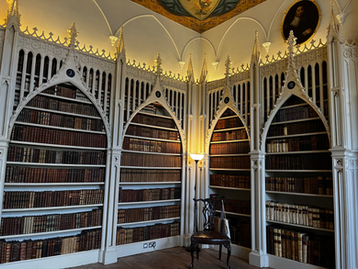





























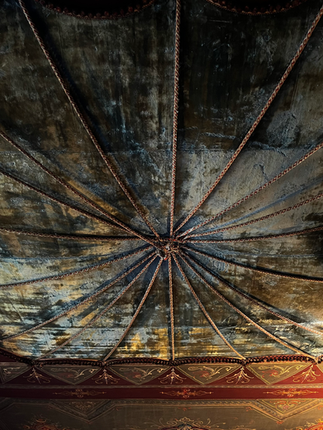

















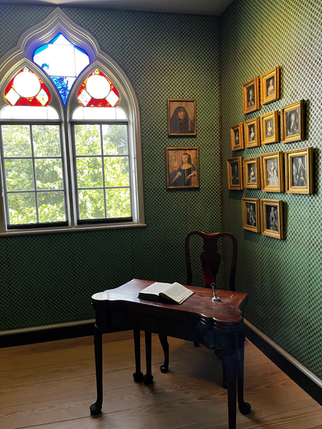





















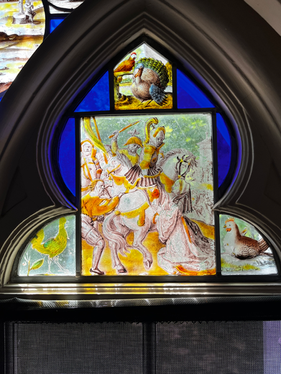























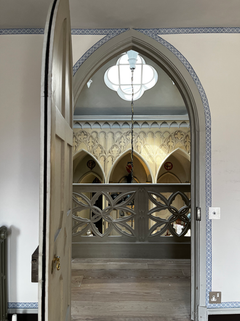





























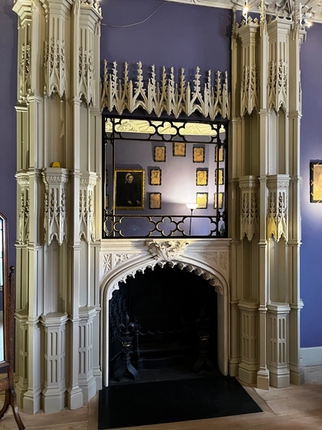





































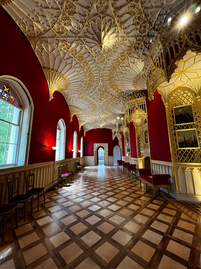

















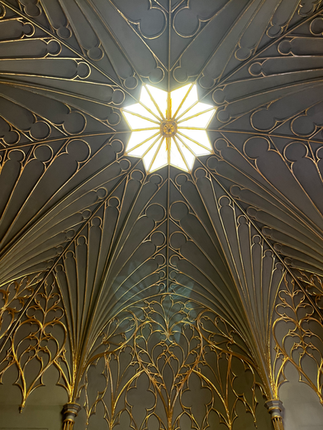









































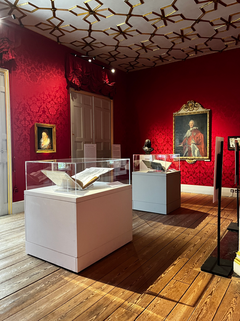













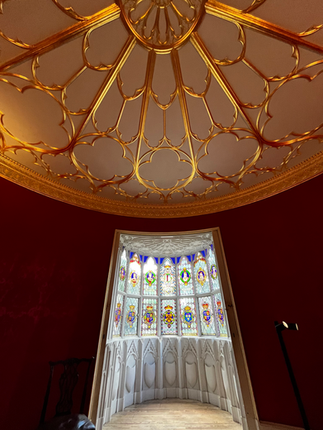
































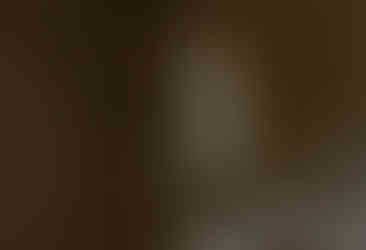






















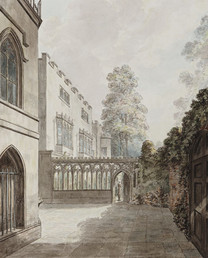



































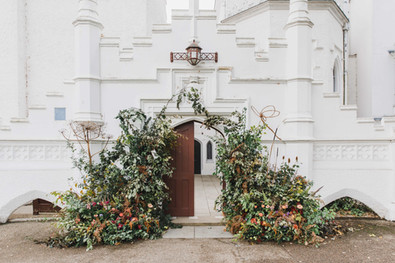















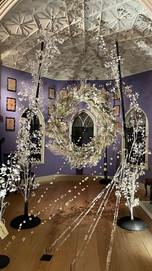






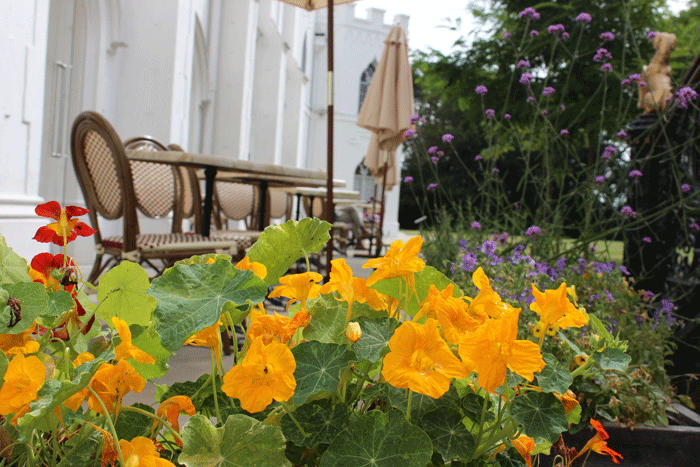
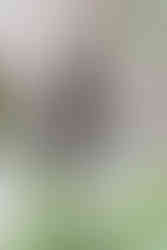








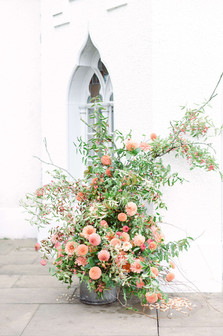











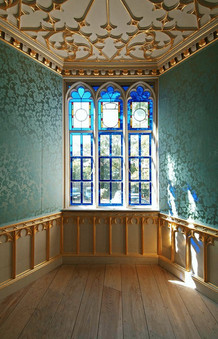











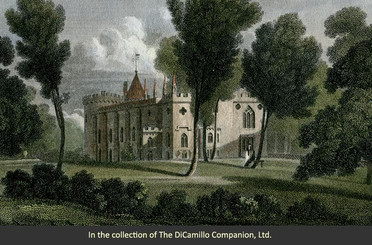





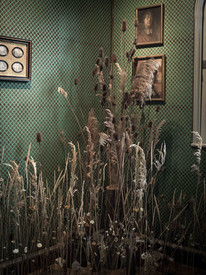

















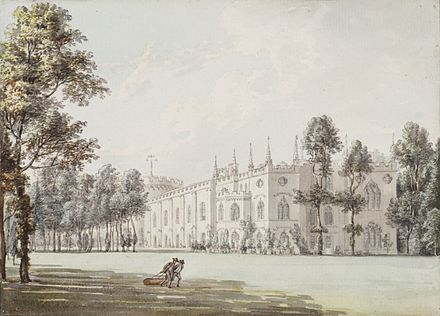






































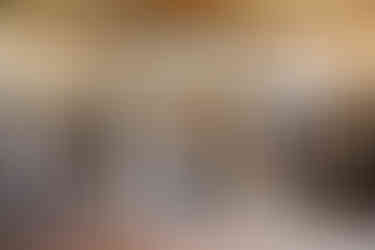




































Comments